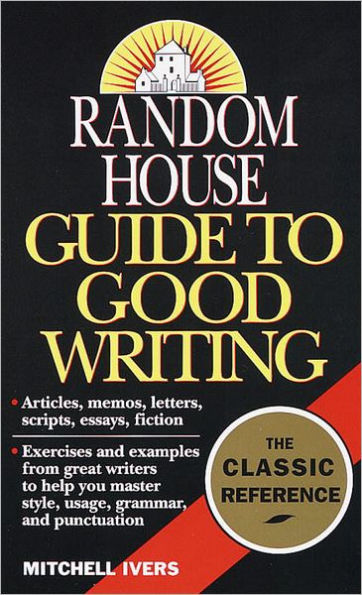Read an Excerpt
INTRODUCTION
How to Read a How-to-Write Book
Read this book with a pen and paper at your side—or with your word processor up and humming. While you’re still reading, begin to write.
Most of us write because it is not enough merely to be well read. We long to be “well said,” to think of ourselves—and have others think of us—as possessing the ability to write. We admire the economies as well as the poetic fancies of our favorite writers and wish that we too could wield words with such flair. We try and are discouraged. In desperation we pick up a how-to-write book. There are books of instruction and books of inspiration. The instructional books are often dull, while the inspirational books often lack practical advice. Both frequently leave you more discouraged than you were before you picked them up. A good how-to-write book will help you want to write.
Two types of how-to-write books have given writers comfort over the years. One eschews rules altogether; the other passes them on for what they may be worth. One example of a book that eschews rules altogether is Brenda Ueland’s If You Want to Write. Brenda Ueland was a writer, editor, and teacher who died in 1985 at the age of ninety-three. An ardent feminist, she believed that “everyone is talented, original and has something to say,” and she recommended that women neglect their housework for writing. If You Want to Write, first published in 1938 and currently available in paperback, was intended to inspire women whose creative urge had been “drummed out” by too many “unloving know-it-alls”: teachers, critics, parents, and husbands. The only good teacher, Ueland maintained, was an encouraging friend who “loves you, who thinks you are interesting or very important or wonderfully funny.” Brenda Ueland’s words of encouragement to her students were “Tell me more. Tell me all you can. I want to understand more about everything you feel and know and all the changes inside and out of you. Let more come out.”
An example of the other kind of how-to-write book, long out of print, is Playwright at Work by playwright and director John van Druten. Written in 1953, when van Druten’s kind of well-made play was going out of fashion, the book mostly talked about the techniques he lived and wrote by: laws of construction, plot, and dialogue. “I cannot make you a playwright,” van Druten wrote, “I can tell you only what I know and think, myself. There will be no rule that is not covered with the phrase ‘to suit my tastes.’ Those tastes may very well not be yours, as they have often not been those of other people. But they are all that I can write.”
The rules and techniques presented in The Random House Guide to Good Writing are offered in the same spirit: as tools with which you can fashion your own writing. If you were to attempt any other craft or hobby—pottery, auto mechanics, photography—you would first acquaint yourself with the available tools and then choose the appropriate ones for the task at hand.
“Writing has laws of perspective,” said Truman Capote, “of light and shade, just as painting or music does. If you are born knowing them, fine. If not, learn them. Then rearrange the rules to suit yourself.” T. S. Eliot agreed: “It is not wise to violate the rules, until you know how to observe them.”
This book attempts to help you turn your appreciation of good writing into an ability to write well: Chapter One defines good writing, as something first to be appreciated, then to be practiced. Chapter Two demonstrates how to establish voice and tone, Chapter Three the principles of structure and plot, Chapter Four formal and familiar styles. Chapters Five and Six review the rules of grammar and usage many writers struggle with. Chapter Seven is on inspiration and perseverance. There are three appendixes: The first is the Random House Style Manual, the basic rules of punctuation, capitalization, grammar, usage, and style used by Random House’s copy editors and proofreaders. The other two appendixes are classic pieces of good writing, both of which are outlined in Chapter Three: Emerson’s essay “Character” and Poe’s short story “The Masque of the Red Death.” Finally, there is a bibliography of books on writing and two indexes, including one containing troublesome words and grammatical terms, which can be used for easy reference.
Examples of good writing are used as illustrations throughout this book; most are drawn from American writing, many but not all from Random House writers. British writers, European writers, and writers of other cultures are cited less frequently, not for chauvinistic reasons but to narrow the focus: There is such a thing as good, clean, contemporary American writing style, and it is the goal of this book to help you achieve it.



